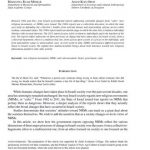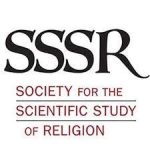The nature of the society’s response to new religious movements actually illumonates us on the society itself.
For example, in the U.K. and the U.S., the cults were mainly accused of brainwashing; in the U.S., they were also held responsible for the breakdown of the family and various economic crimes; in France, NRMs were portrayed as engaging in political plots and subverting the secular French nationality (Laïcité), which mandates separation between religion and state; in Germany, NRMs were presented as failing to make their national insurance payments and as a danger to democracy; in Japan, they were suspected of harming young people’s chances of succeeding in the workforce.
And what about Israel? A study of the reports written by governmental bodies regarding “cults” serves us as to analyse the Israeli society, its major values, processes and transformations.
The Ba’al Shem Tov said: […] Whenever a person sees someone doing wrong or hears about someone who did wrong, he should realize that he himself contains a tiny bit of that thing. Even if he is righteous, he still has a tiny amount of it. (From Arvei Nahal by Rabbi David Shlomo Eibenschutz, Parashat Lekh Lekha)
Abstract
Between 1982 and 2011, four Israeli governmental reports addressing ostensible dangers from “cults” (New Religious Movements) were issued. The reports issued during the 1980s use a collectivistic discourse, in which the state sees itself as defending the collective’s borders from external threats and as representing the various sectors within it, while seeking consensual values. The report from the 1990s expresses an interim stage, in which the state tried to find a balance between protecting individual liberties and protecting the interests of broad sectors. The 2011 report focuses solely on the question of harm to individuals.
Previous research has demonstrated that the way societies react to NRMs can teach us a great deal about the societies themselves. We further argue that as a society changes, so do its views of NRMs. Correspondingly, we find that in every point in time NRMs represented a different perceived threat to Israeli society.
The paper demonstrates how the four Israeli reports reflect milestones in three processes of change that have taken place in Israeli society: from a collectivist-hegemonic ethos to a multi-sectorial one; from a focus upon society to a focus on the individual; and from nationalistic values to universalistic ones.
Authors
Marianna Ruah-Midbar
Adam Klin-Oron
Links
The Journal for the Scientific Study of Religion (JSSR) is one of the finest in religious studies in the world. For more information on the journal – click here.
For the issue’s page, in which the article was published, on the journal’s site – click here.
For the article’s page on the journal’s site – click here.
For the Society for the Scientific Study of Religion’s site – click here.
For the society’s FaceBook page – click here.
Year
2013
Language
English
Academic/Non-academic
Academic item
Bibliographical citation
Ruah-Midbar, Marianna, and Adam Klin Oron, “’Tell me Who your Enemies are’ – Israeli Government Reports on NRMs”, in Journal for the Scientific Study of Religion 52.4 (2013): 810–826.













